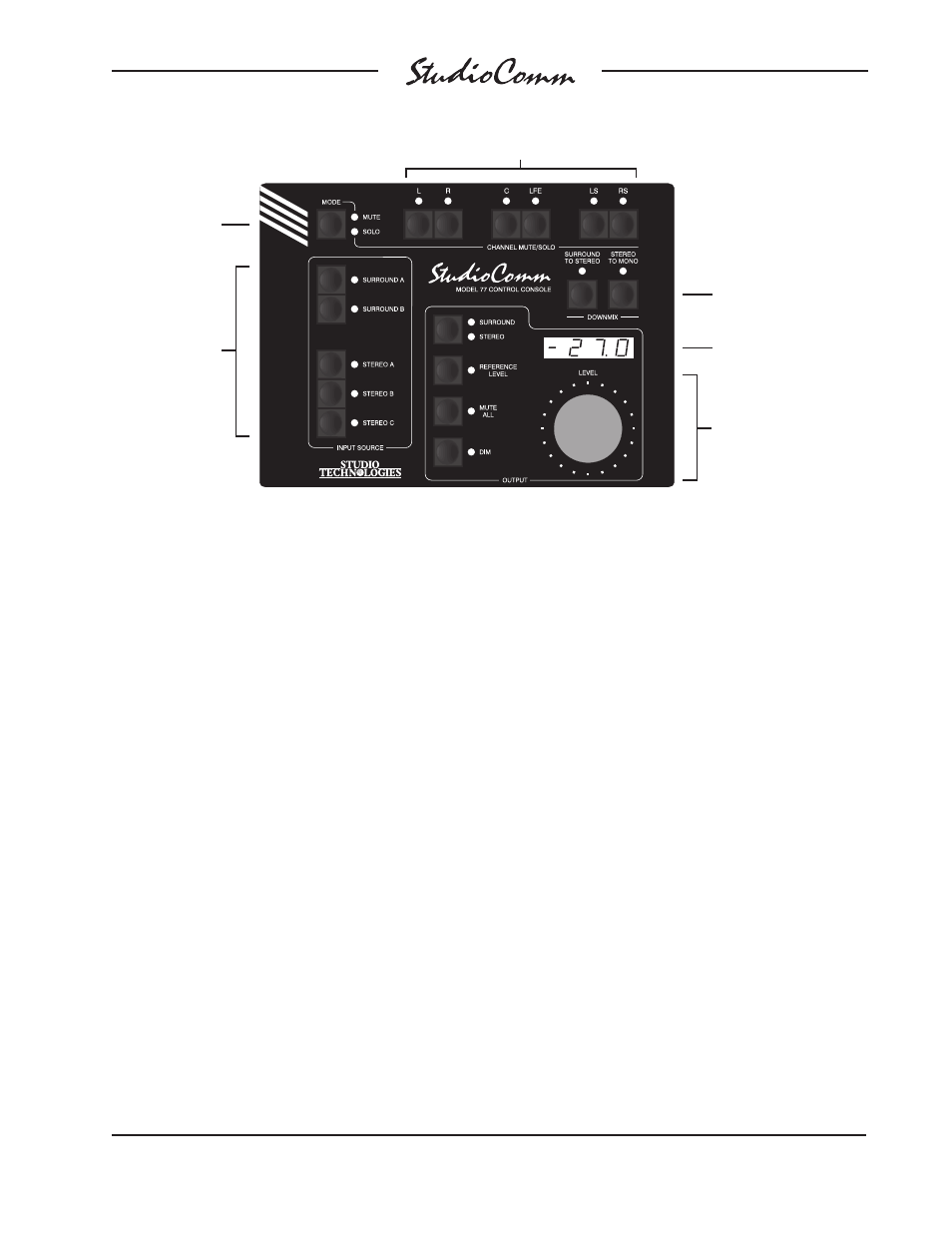Additional details – Studio Technologies 76D V.2.02 User Manual
Page 7

Model 76D/77 User Guide
Issue 2, June 2009
Studio Technologies, Inc.
Page 7
for Surround
Figure 3. Model 77 Control Console Front Panel
Channel mute/solo
Mute/solo
mode
Post-fader surround
monitor output
• Surround/stereo
• Reference level
• Mute all
• Dim
• Rotary level control
Monitor output
level display
Input source
select
Downmix
Additional Details
The Model 77 provides five buttons and
associated LEDs for selection of the sur-
round and stereo input sources to be moni-
tored. While in most cases only one input
source will be monitored at a time, stereo
input C can be selected for simultaneous
monitoring with one of the two surround
or other two stereo inputs. This allows
the two selected inputs to be combined
(“summed”).
The post-fader surround and stereo moni-
tor output levels can be controlled by way
of a large, easy-to-use rotary control. The
control, actually a digital encoder, allows
level selection in precise 0.5-dB steps. The
auto mute all function causes the post-
fader surround and stereo monitor output
channels to automatically mute whenever
the output level is set to its minimum posi-
tion. Using the reference level function, the
post-fader surround and stereo monitor
output levels can be set to a pre-config-
ured value. This is provided for audio-with-
picture applications that require a specific
monitor output level. The reference level is
easily configured by taking an electronic
“snapshot” of the desired monitor output
level. For operator confirmation a 4-digit
LED readout can display the level of the
post-fader surround and stereo monitor
output channels. To match the needs of
a facility, it can be configured to display
either the attenuation level or the sound
pressure level (SPL).
The dim function allows the post-fader
surround and stereo monitor output levels
to be reduced by a fixed dB amount. The
dim level is configured from among four
available values. A mute all function allows
all post-fader surround and stereo moni-
tor output channels to be simultaneously
muted. The channel mute/solo section pro-
vides individual post-fader surround and
stereo channel monitoring control, allowing
a single channel to be muted or monitored.
Multiple channels can also be simultane-
ously selected for muting or “soloing.”
A special solo mode is also provided,
called channel pop solo, which offers a
